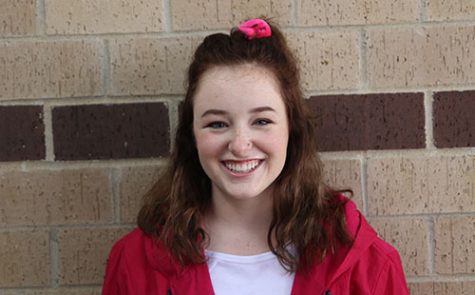Junior class tours WWI museum

A line of De Soto juniors walk towards the National World War I Museum and Memorial in Kansas City, Missouri on Oct. 26.
The junior class at De Soto High School had the opportunity to leave school and tour the National World War I Museum and Memorial in Kansas City, Missouri, last Thursday on Oct. 26.
“Basically, we went to a World War I museum in Kansas City, and we got a tour guide, and they showed us around the entire museum and gave explanations and we stopped to listen to what they had to say,” junior Madeline Merckling said. “They were all super knowledgeable [about the war].”
Social studies teacher Micah Tenner appreciates the resources that the museum shares with its visitors.
“They have a really good film that lays out primary source footage of all the things we talk about in class, things like nationalism and militarism that are kind of hard to visualize. The film, and the exploring of the museum, does a really nice job of showing why those were issues,” Tenner said. “The weapons are really fascinating and interesting, and I remember that our tour guide was talking about all the different ways that they [the soldiers] figured out how to kill each other, which is horrifying and weirdly fascinating at the same time. When you see the human destruction and how cruel we can be to each other, the ways that we can treat each other on the battlefield, that was kind of sobering.”
One of the entrances to the museum holds important significance to the lives lost in the war, according to Tenner.
“I love the bridge at the opening that looks down on the poppies below,” Tenner said. “Poppies were a symbol of World War I, [representing] the bloodshed of World War I.”
Merckling also appreciated the museum’s poppy display.
“When you first were walking into the museum, there was a glass floor with all these poppies underneath,” Merckling said. “I thought that was cool, and I didn’t know about that [symbol] before, and so that will stick out in my mind now.”
Aside from the poppies, the museum has amassed numerous artifacts from the war.
“The thing that they said at the museum was that everything in there was worn by someone, was handled by someone, something or someone rode it; it was all stuff from the war,” Tenner said. “I think it’s really cool when you’re studying something that happened a hundred years ago and actually get [to see] a concrete, tactile object. I think it’s a lot easier to connect when you can see what they were wearing or what they held or what they were looking at [during that time].”
While the museum is a great learning opportunity for students, Tenner believes that other people could learn a lot from visiting the memorial as well.
“I think it’s important [for people to visit the museum],” Tenner said. “Obviously, you have people who sacrificed their lives for a cause. The cause was kind of always up in the air about what it actually was about, but it was roughly what Wilson said: to make the world safer for democracy. So I think it’s always important to go to a place that honors the sacrifice and courage and bravery of those soldiers, and for anyone to visit, not just on a class field trip.”
Overall, students who went on the field trip, like Merckling, were impacted by some of the things that they learn.
“I definitely think that I’m going to remember things better now that I’ve been there, seeing the experiences that other people, like the tour guides, shared,” Merckling said. “It keeps the history alive.”

Meet Abby Smith, the Green Pride's first Graphic Design Editor. This is Abby’s senior year, as well as her third year on staff. She has...


